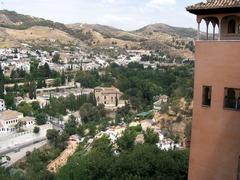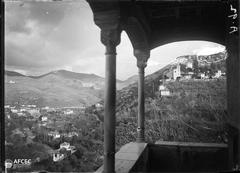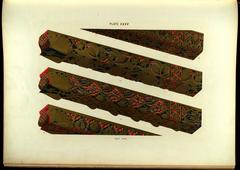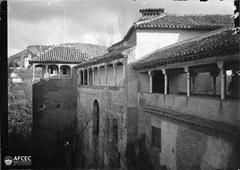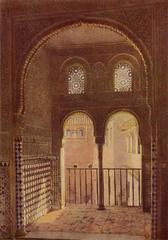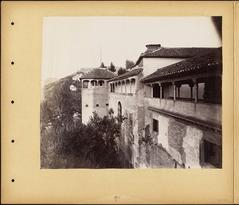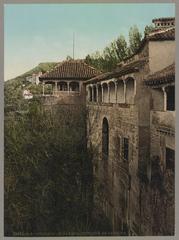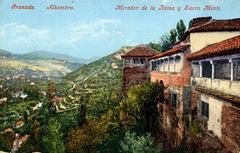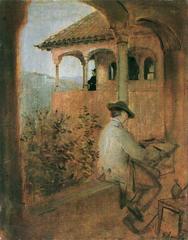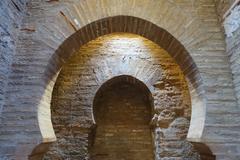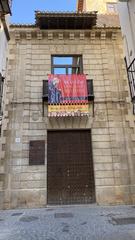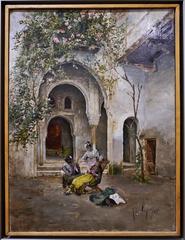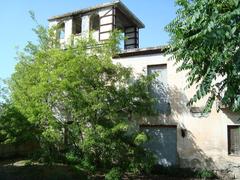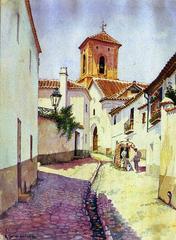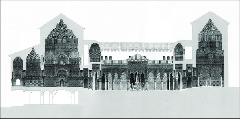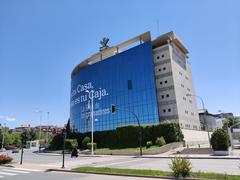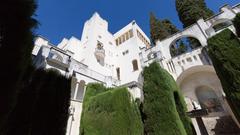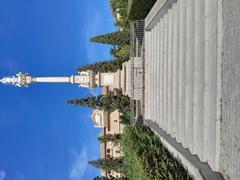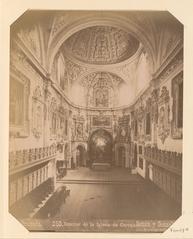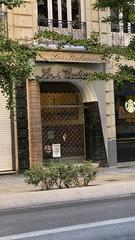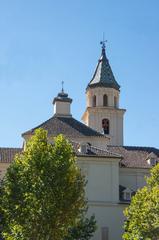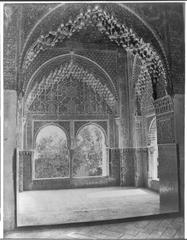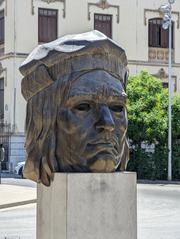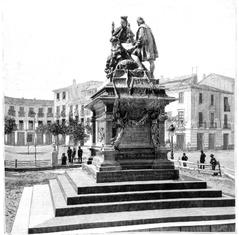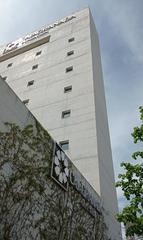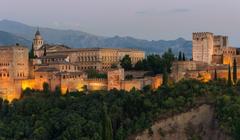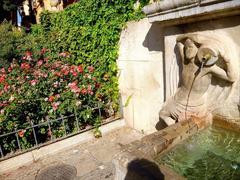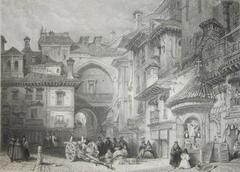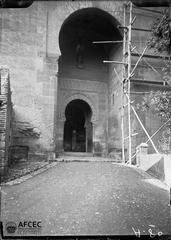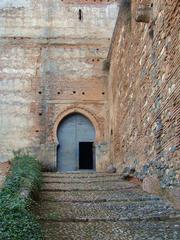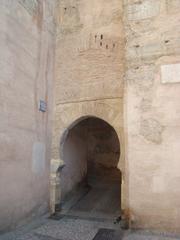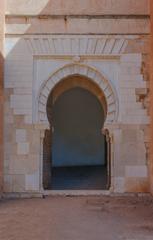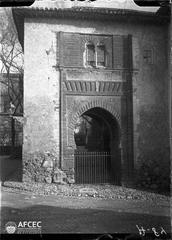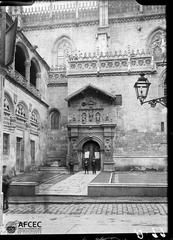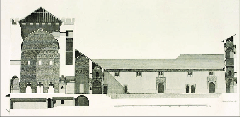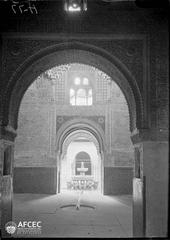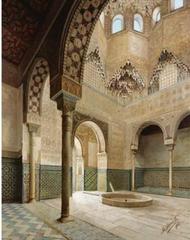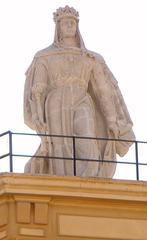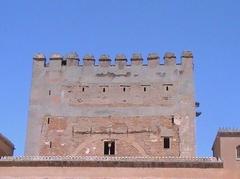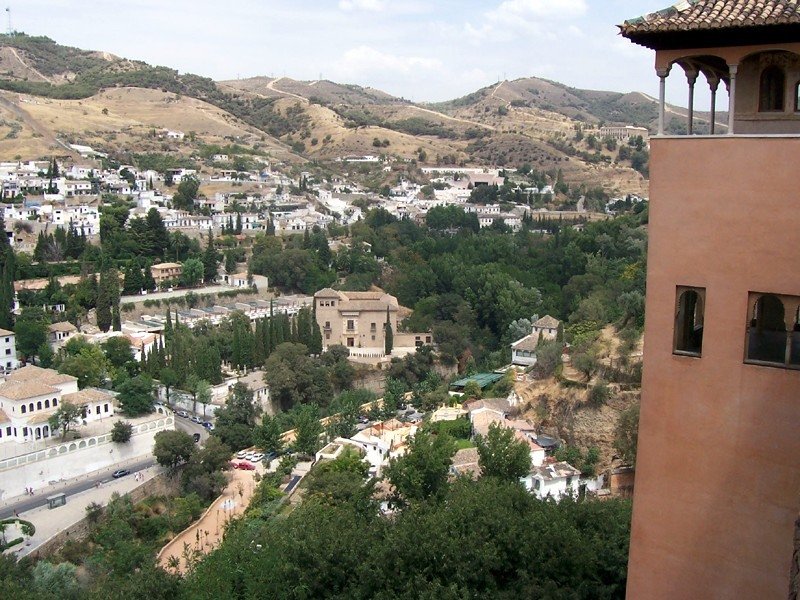
Peinador de la Reina: Visiting Hours, Tickets, and Historical Significance in Granada
Date: 14/06/2025
Introduction: The Peinador de la Reina’s Unique Place in Granada’s Heritage
Nestled within the world-renowned Alhambra complex in Granada, Spain, the Peinador de la Reina—“The Queen’s Dressing Room”—stands as a remarkable symbol of Andalusia’s layered history. This tower is an architectural and artistic gem, reflecting the evolution from Nasrid Islamic rule to Renaissance Christian sovereignty. Its blend of intricate Nasrid craftsmanship, Renaissance frescoes, and panoramic views over the Albaicín district encapsulate the cultural fusion that defines Granada. Though generally only accessible through guided tours due to its fragility, the Peinador de la Reina is a must-see for history enthusiasts and lovers of art and architecture alike. For the most current details on access, tickets, and special tours, refer to the official Alhambra website (alhambra-patronato.es). This guide explores the monument’s origins, artistic features, visitor logistics, and expert tips on how to best experience this unique site (visit-andalucia.com; piccavey.com).
Contents
- Introduction
- Historical Origins and Nasrid Era
- Christian Conquest and Architectural Transformation
- The Empress Isabel and the Tower’s Royal Function
- Renaissance Artistic Interventions
- Decline, Damage, and 20th-Century Restoration
- Architectural and Artistic Features
- Visiting the Peinador de la Reina
- Hours, Tickets, and Accessibility
- Travel Tips and Nearby Attractions
- Visuals and Interactive Media
- Frequently Asked Questions (FAQ)
- Conclusion and Final Tips
- Sources and Further Reading
Historical Origins and Nasrid Era
The Peinador de la Reina originated in the Nasrid dynasty as the Torre de Abu I Hayyay, serving a dual purpose: defensive lookout and residential retreat within the Alhambra’s walls. Characteristic Nasrid features—such as horseshoe arches, geometric plasterwork, carved wood ceilings, and strategic windows—balanced privacy with sweeping views over Granada and the Albaicín. The tower’s position not only provided military advantage but also underscored the sultans’ appreciation for beauty and contemplation (visit-andalucia.com).
Christian Conquest and Architectural Transformation
Following the Christian conquest of Granada in 1492, the Catholic Monarchs began adapting the Alhambra for royal use. The tower underwent significant alterations: a second story was added, windows were enlarged to emphasize views, and a mudéjar-style floor was installed—blending Islamic and Christian decorative arts. These changes marked the beginning of the Alhambra’s transformation into a Renaissance court and symbolized the shifting political landscape (Fascinating Spain).
The Empress Isabel and the Tower’s Royal Function
The name “Peinador de la Reina” dates to the 18th century, referencing its traditional association with Empress Isabel of Portugal, wife of Charles V. The tower was repurposed as a secluded royal chamber, emphasizing privacy and intimacy. Features like the upper “mirador” (viewpoint) and a service room with an incense burner (the so-called “Torre de la Estufa”) underscore its use as a luxurious retreat for royal women (piccavey.com).
Renaissance Artistic Interventions
During the Renaissance, the Peinador de la Reina was further embellished with artistic flourishes. Italian artists Julio Aquiles and Alexander Mayner painted vibrant frescoes between 1539 and 1546, depicting military scenes from Charles V’s Tunisian campaign and a rich tapestry of Renaissance motifs—angels, animals, and floral patterns—on striking red and white backgrounds. These works coexist with Nasrid geometric designs, creating a unique artistic dialogue and reflecting the tastes of the Habsburg court (piccavey.com).
Decline, Damage, and 20th-Century Restoration
Over the centuries, the tower suffered neglect, damage, and even use as a prison. By the 20th century, restoration efforts led by Leopoldo Torres Balbás focused on preserving both the Nasrid and Christian elements, recovering original paintings, and repairing structural damage. These efforts have ensured the survival of this exceptional example of cultural syncretism (alhambra-patronato.es).
Architectural and Artistic Features
- Structure: Two stories built atop the original Nasrid tower, with enlarged windows and a covered balcony offering panoramic views.
- Decorative Program: A harmonious blend of Nasrid plasterwork, coffered wooden ceilings, Renaissance frescoes, and ornamental inscriptions.
- Mirador: The upper chamber, famed for its vistas and role as a royal retreat.
- Secret Staircase: Discovered in the 19th century, connecting the tower to the wooded areas below.
- Inscriptions: Fragments of original Nasrid inscriptions and Christian additions, narrating the tower’s layered history.
Visiting the Peinador de la Reina
Hours, Tickets, and Accessibility
- Visiting Hours: The Alhambra complex is generally open 8:30 AM–8:00 PM (April–October) and 8:30 AM–6:00 PM (October–March). The Peinador de la Reina is only accessible via special guided tours due to conservation efforts. Check the official Alhambra website for up-to-date schedules and tour availability.
- Tickets: Access to the tower is included in the general Alhambra ticket, which must be purchased online in advance. Entry to the Nasrid Palaces is timed and strictly enforced—arrive punctually (Alhambra Granada Tickets).
- Accessibility: The tower has stairs and narrow passages, making it challenging for visitors with limited mobility. For accessibility details, contact visitor services ahead of your visit (alhambra.org).
Travel Tips and Nearby Attractions
- Book Early: Tickets often sell out weeks in advance, especially in peak seasons.
- Comfort: Wear comfortable shoes and bring water; expect extensive walking and stair climbing.
- Guided Tours: Enrich the experience with expert-led tours that include historical context and artistic analysis.
- Photography: Non-flash photography is allowed; tripods are generally not permitted.
- Facilities: Restrooms and cafés are available throughout the Alhambra; strollers are not allowed inside buildings.
- Nearby Sites: Don’t miss the Nasrid Palaces, Generalife Gardens, Alcazaba fortress, and the Albaicín neighborhood for a full Granada experience (Nomads Travel Guide).
Visuals and Interactive Media
- Images: Ornate ceilings, Renaissance frescoes, and panoramic balcony views (e.g., “Peinador de la Reina coffered ceiling,” “Italianate frescoes,” “View over Granada”).
- Interactive Maps: Available on the official Alhambra website for planning your visit.
- Virtual Tours: Online resources provide digital access to the tower and the broader Alhambra complex (piccavey.com).
Frequently Asked Questions (FAQ)
Q: Can I visit the Peinador de la Reina without a guided tour?
A: No, access is generally restricted to specialized guided tours due to conservation needs.
Q: How do I buy tickets for the Peinador de la Reina?
A: Tickets must be purchased online in advance as part of the Alhambra general admission. Arrive at the Nasrid Palaces for your scheduled entry time.
Q: Is the tower accessible for visitors with disabilities?
A: Accessibility is limited due to stairs and narrow passages. Consult official resources for accommodations.
Q: Can I take photos inside the Peinador de la Reina?
A: Yes, non-flash photography is allowed, but tripods are not permitted.
Q: What are the best times to visit to avoid crowds?
A: Early mornings and weekdays during the off-season are least crowded.
Conclusion and Final Tips
The Peinador de la Reina is a testament to Granada’s dynamic history, where Nasrid artistry and Renaissance aesthetics coexist in a single, evocative space. Although access to its interior is restricted, the tower’s story and exterior remain an essential part of the Alhambra experience. Secure your tickets well in advance, consider a guided tour for deeper insight, and enjoy the breathtaking views and rich heritage that the Peinador de la Reina embodies.
Plan your visit with confidence by checking the latest updates on the official Alhambra website, and consider downloading the Audiala app for exclusive guides and real-time updates. Stay connected for more tips and stories about Granada’s remarkable sites.
Sources and Further Reading
- Peinador de la Reina: Visiting Hours, Tickets, and History of Granada’s Hidden Gem, 2025, Alhambra Patronato (https://www.alhambra-patronato.es)
- Peinador de la Reina, Alhambra, Granada: History, Visiting Hours, Tickets & Travel Tips, 2025, Visit Andalucia (https://www.visit-andalucia.com/history-of-alhambra-granada/)
- Peinador de la Reina, Alhambra, Granada, 2025, Fascinating Spain (https://www.fascinatingspain.com/articulo/what-to-see-in-andalusia/alhambra-and-generalife-in-granada/20200611123039066783.html)
- Peinador de la Reina Visiting Hours, Tickets & Guide to Granada’s Historic Alhambra Tower, 2025, Nomads Travel Guide (https://www.nomads-travel-guide.com/places/torre-del-peinador-de-la-reina/)
- Peinador de la Reina: Visiting Hours, Tickets & History of Granada’s Unique Alhambra Tower, 2025, Piccavey (https://piccavey.com/granada-alhambra-walls/)
- Peinador de la Reina Visiting Hours, Tickets & Guide, 2025, Alhambra Granada Tickets (https://www.alhambra-granada-tickets.com/alhambra-entrances/)
- Peinador de la Reina Visiting Hours, Tickets & Guide, 2025, Alhambra.org (https://www.alhambra.org/en/alhambra-openning-time.html)
